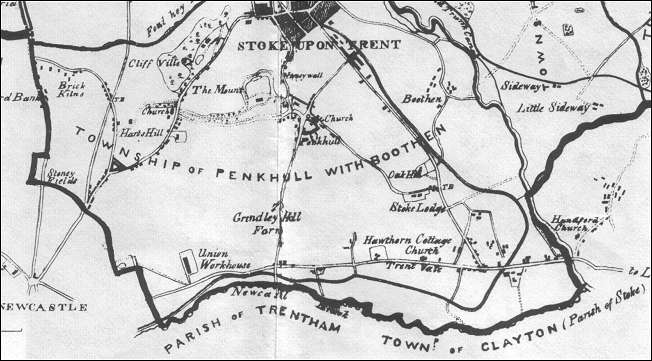|

1842 map showing the
"Township of Penkhull with Boothen"
Bank Top
is located at the edge of the old Hamlet of Sneyd - Stanfields, Bank
House, Hamil and Sneyd Farm can be seen in the centre of the map.
"...the principle
messuage in the hamlet in "Bank House," a showy mansion on the
summit of the ridge, erected by the Late Mr. Richard Riley, just before
his decease in 1828, and is now occupied by Mr. Joseph Twigg."
Ward 'The
borough of Stoke-on-Trent' 1842

Twigg, Joseph (1780-1861), colour
manufacturer, Burslem
"Joseph Twigg, born in
1780, inherited a colour works at Velvet Croft, Burslem, started by his
father, William, on land bought from William Adams.
Joseph Twigg attended Burslem church. He was elected chairman of the
improvement commissioners in 1825. He married Ann, daughter of William
Adams, on 15 September 1817. They had three sons, William Edward, Joseph
and Francis.
The family lived at Bank House, Burslem.
Joseph Twigg died in 1861, his son Joseph continuing the business."
William Edward
Twigg was born on 27 Oct 1820 at the Bank House. He was articled to John
Ward, the local historian.
Source: 'People of the
Potteries', Adams, VCH viii.
Why
the name Riley occurs so often in this area?
In the district of Bank Top we have 'Riley Terrace', 'Rileys'
public house and Riley Avenue.
John Ward in his 'The Borough of Stoke-upon-Trent' (1843) records the
among the chief proprietors of the land and mixed property .... The Misses
Riley..' also '"Bank House,' a showy mansion on the summit of the
ridge, erected by the late Mr. Richard Riley, just before his decease in,
in 1828.'

|